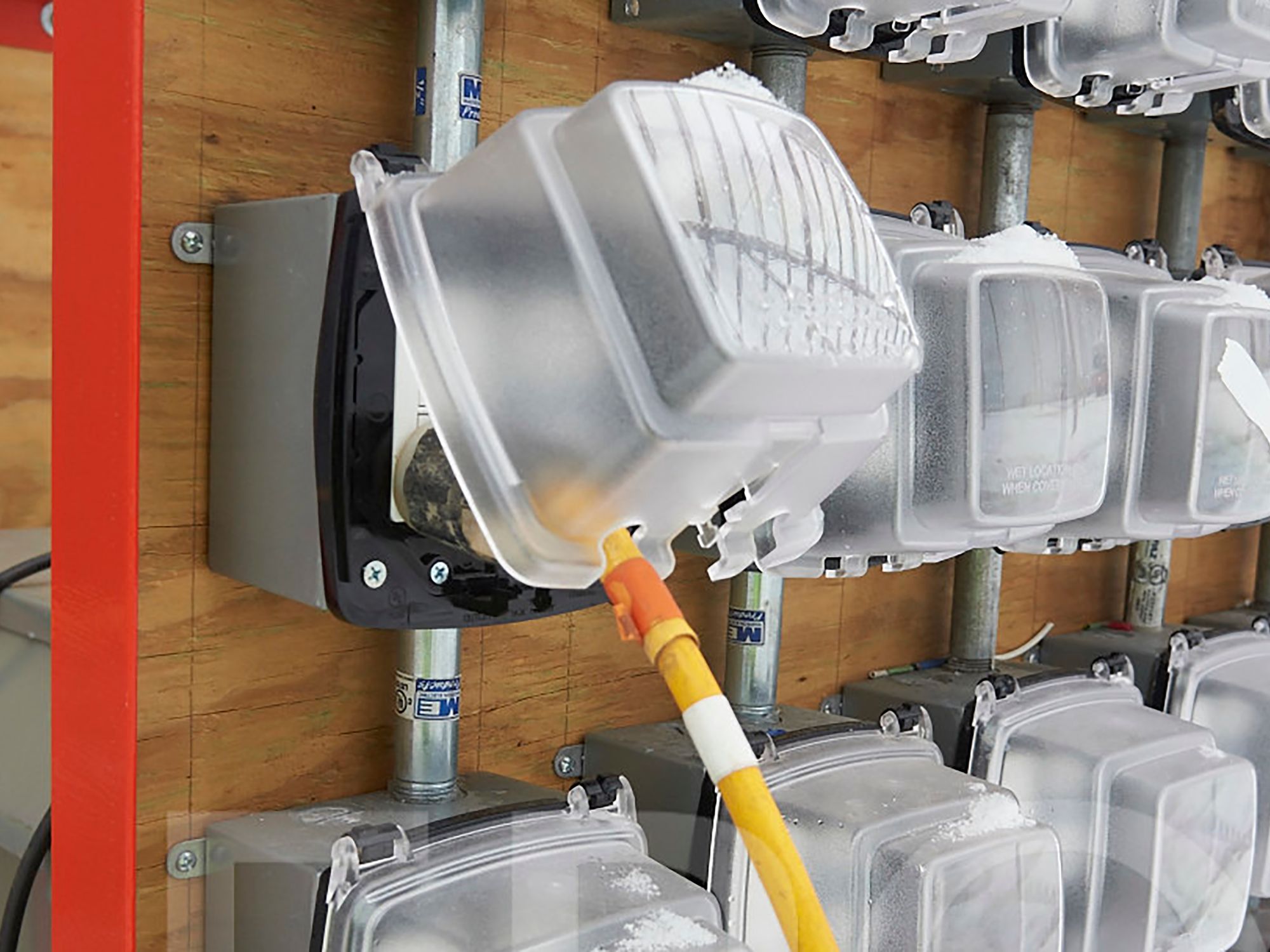Safety-related maintenance and environmental considerations

- Environmental conditions, such as damp areas or excessive temperatures, can lead to deterioration of electrical equipment.
- Batteries must be properly stored in a ventilated area where surfaces will not be damaged by acids and fumes.
- Flexible cords, which are often part of construction power tools, pose specific hazards and must be used and maintained properly.
Construction jobsites often change on a weekly, if not daily, basis. That’s why it’s so important to maintain electrical equipment in order to protect all the trades working there. In addition, changing environmental conditions can jeopardize worker safety.
What is the proper way to maintain equipment?
The employer must ensure that all wiring components and utilization equipment in hazardous locations are maintained in a dust-tight, dust-ignition-proof, or explosion-proof condition without loose or missing screws, gaskets, threaded connections, seals, or other impairments to a tight condition.
How can you prevent environmental deterioration of equipment?
Unless identified for use in the operating environment, no conductors or equipment can be located:
- In damp or wet locations.
- Where exposed to gases, fumes, vapors, liquids, or other agents having a deteriorating effect on the conductors or equipment.
- Where exposed to excessive temperatures.
Control equipment, utilization equipment, and busways approved for use in dry locations only must be protected against damage from the weather during building construction. For protection against corrosion, metal raceways, cable armor, boxes, cable sheathing, cabinets, elbows, couplings, fittings, supports, and support hardware must be made of materials appropriate for the environment in which they are installed.
What are the safety requirements for batteries?
- Batteries of the unsealed type must be located in enclosures with outside vents or in well-ventilated rooms arranged to prevent the escape of fumes, gases, or electrolyte spray into other areas. Other provisions include:
- Ventilation — to ensure diffusion of the gases from the battery and to prevent the accumulation of an explosive mixture.
- Racks and trays — treated to make them resistant to the electrolyte.
- Floors — acid resistant construction unless protected from acid accumulations.
- Face shields, aprons, and rubber gloves — for workers handling acids or batteries.
- Facilities for quick drenching of the eyes and body — within 25 feet (7.62 m) of battery handling areas.
- Facilities — for flushing and neutralizing spilled electrolytes and for fire protection.
What are the hazards of flexible cords?
With the wide use of portable tools on construction sites, the use of flexible cords often becomes necessary. Hazards are created when cords, cord connectors, receptacles, and cord- and plug-connected equipment are improperly used and maintained.
Generally, flexible cords are more vulnerable to damage than is fixed wiring. Flexible cords must be connected to devices and to fittings so as to prevent tension at joints and terminal screws. Because a cord is exposed, flexible, and unsecured, joints and terminals become more vulnerable. Flexible cord conductors are finely stranded for flexibility, but the strands of one conductor may loosen from under terminal screws and touch another conductor, especially if the cord is subjected to stress or strain.
A flexible cord may be damaged by activities on the job, by door or window edges, by staples or fastenings, by abrasion from adjacent materials, or simply by aging. If the electrical conductors become exposed, there is a danger of shocks, burns, or fire. A frequent hazard on a construction site is a cord assembly with improperly connected terminals.
When a cord connector is wet, hazardous leakage can occur to the equipment grounding conductor and to humans who pick up that connector if they also provide a path to ground. Such leakage is not limited to the face of the connector but also develops at any wetted portion of it.
When the leakage current of tools is below 1 ampere, and the grounding conductor has a low resistance, no shock should be perceived. However, should the resistance of the equipment grounding conductor increase, the current through the body also will increase. Thus, if the resistance of the equipment grounding conductor is significantly greater than 1 ohm, tools with even small leakages become hazardous.
